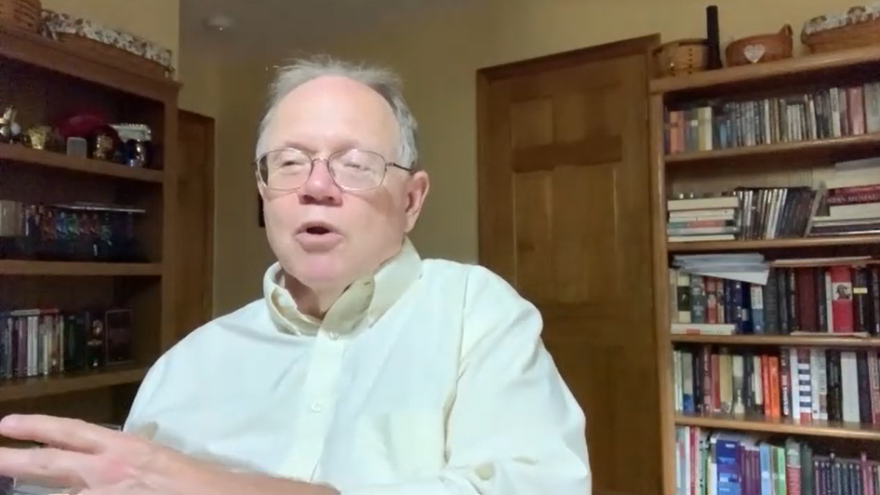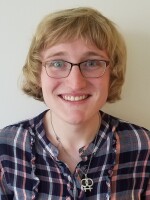Gov. JB Pritzker has signed off on new redistricting boundaries for state legislators. Those maps mean some Bloomington-Normal and Peoria residents will see changes in who represents them in state government.
Democrats already hold a supermajority in both chambers of the state legislature. That means they generally have control over the redrawing of maps, as Republicans have called for an independent commission to take over the process.
Kent Redfield, a longtime professor of political science at University of Illinois Springfield, said the new maps could create problems for Republicans in office now.
"It's a partisan map, it's meant to favor Democrats, to maintain seats that they have, to increase the majority if possible," said Redfield. "This is a very defensive map."
Take the district of state Sen. Dave Koehler, D-Peoria. The new map means he'll now also represent parts of Bloomington-Normal.
Bradley University political science professor Megan Remmel says that move will probably shore up the district in favor of Democrats, especially on the Bloomington-Normal side.
"I don't think they were worried about the Peoria side of the equation," said Remmel. "I think they are trying to shore up the Bloomington-Normal side of the equation."
Remmel said while there's some differences, the similarities between Bloomington-Normal and Peoria mean Koehler's job could get easier.
"I think it makes it a lot easier for him to figure out kind of where his district stands on issues," said Remmel. "Now, how he chooses to interpret that, or how any legislator chooses to interpret that, is kind of up to them."
Peoria Mayor Rita Ali has previously voiced her support for the change, saying Peoria and Bloomington-Normal "are two urban areas that work well together," and that the new district "will be good for us in terms of attracting, addressing the needs and attracting resources to both areas."
What the maps mean for voters
The new maps split up both areas across multiple Senate and House districts. Remmel said the attempts to keep groups with common interests together could create a bigger divide across districts.
"You end up getting these kind of these battles across districts where everybody's in the same geographic area, but because they're split into these different legislative districts, you end up getting competition even within the same town or the same county," said Remmel.
Remmel said the way the districts are drawn could turn some voters off of the election process.
"There's kind of the concerns about, you're living in a district where you're in the minority political party, and you just, like, give up voting because you know your candidate's never gonna win," said Remmel. "It kind of lowers your political efficacy, and you don't really feel connected to the system."
And even if interest does go up, Remmel said that effect will be temporary, especially in districts where incumbents will have to compete with one another.
"The Republican incumbents, some of them are going to be doing great because their districts are just gonna be packed full of Republicans, and life's gonna be easy for them," said Remmel. "Some of them are gonna be fighting for their political lives."
George Gordon served on the McLean County Board for 24 years, in addition to his tenure as a political science professor at Illinois State University. He said districts such as Koehler's could be more competitive than Democrats expect.
"There's lots of public sentiment that well, maybe somebody's been there too long," said Gordon. "A new face, new ideas, it can make for a competitive district. It might lean Democratic, but it also might be considered a swing district, and I think that is certainly a possible outcome."
What the new maps mean for Democrats
McLean County Democratic Party Chair Patrick Cortesi is optimistic about what Koehler's new district boundaries will mean for Democrats in the region, calling Koehler "a party chair's dream."
Cortesi said the party has been "steadily making progress" in recent years.
"Having somebody like a Senator Koehler, who's able to come in here, and he's going to be campaigning and spending time and resources here, it's going to help us out up and down the ballot, and we're looking forward to that," said Cortesi.
Cortesi said the increase in the number of House and Senate districts in the area "isn't ideal." Finding out parts of the county would be part of Koehler's district tempered that feeling.
"It gives us that opportunity to be able to rally the troops, to be able to get people out and excited about working on campaigns, about working for the party, about working on elections," said Cortesi. "I'm a big fan of Senator Koehler. He's certainly been no stranger here in McLean County."
Gordon said there's wisdom in Koehler making himself better known. Koehler is already making efforts to reach out to his potential new constituents. Earlier this month, he held an in-person meet and greet with the McLean County Democrats.
"That suggests to me that he already is aware of the need to get himself better known," said Gordon. "It's not as if he's a total unknown to the party faithful, people know him."
Potential obstacles ahead
Gordon said another part of the work ahead for Koehler will be engaging with public officials in the Bloomington-Normal area. Gordon said whether or not they end up liking one another, they'll still have to work together.
"All of them share the same imperative to try to keep things at least cordial enough that conversations and lobbying and negotiating can be done in a workable way," said Gordon. "I have to hope that Dave Koehler hits it off with Mayor (Chris) Koos (of Normal) and Mayor (Mboka) Mwilambwe ... the newly elected mayor of Bloomington, City Manager Tim Gleason in Bloomington, City Manager Pam Reece in Normal, that those folks, at least are able to engage on a cordial enough level that conversations can proceed about what Bloomington-Normal's needs might be, and how a state senator might help."
Gordon said regardless, voters and legislators alike will have to get used to the changes.
"They're gonna have to get used to some new territory, and that happens every 10 years," said Gordon. "Their constituents in their new territory will have to get used to them."
If the new maps remain in place, the first elections using the new district boundaries will happen next year.
The new redistricting maps are not final. Republican leaders have filed a lawsuit saying those maps are unconstitutional.
Kent Redfield said the success of such a case would depend on the argument being made against the maps.
"You can sue this map on the basis that it somehow violates 'one man, one vote,' you can sue this map in terms of whatever it might do to, let's say, the way it treats minority groups within Peoria, within Bloomington-Normal, but you can't sue the map on the basis that it's unfair to Republicans," said Redfield.
Republicans have taken the former approach, on the basis that the new maps used American Community Survey data rather than U.S. Census data, which has not been fully released.
If the maps remain intact, they would mean changes to the state's Supreme Court map for the first time in decades. The Peoria and Bloomington-Normal areas would both fall within the court's fourth district. That district is represented by Republican justice Rita Garman.
There’s no subscription fee to listen or read our stories. Everyone can access this essential public service thanks to community support. Help fund your public media with a contribution to WCBU or WGLT.


